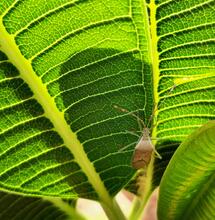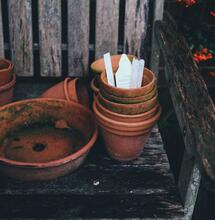Powdery Mildew Explained

As we enter the coldest and wettest months of the year, January can be a challenging time to grow especially if you have buds flowering. The optimal conditions outside can be very wet and humid which means your grow room is being fueled by this outdoor air. From this can arise scenarios where powdery mildew will form and can cause havoc amongst a crop, if not treated immediately and effectively. Below is better explained what is powdery mildew, how it lives and how to prevent this living spore from attaching itself to your beloved plants. By Stoney Tark


What Is Powdery Mildew?
You may have entered your indoor garden or attended your outdoor plants, when all of a sudden overnight you see what looks like white flour has been poured over your leaves. When you rub off with your finger it seems to disappear and then when you return an hour later it is still there. Unfortunately you are dealing with a living organism that is a form of fungi, which attaches itself as an unwanted host to foliage, stems, flowers and fruits. The white powdery substance and what gives this fungus a household name is when the superficial fungus covers the surface of the plant tissue. The optimum temperature for powdery mildew to thrive is between 20-25 degrees Celsius and a relative humidity of 40% and above, is the ideal conditions for spores to germinate. This fungus also prefers to grow in low light levels which is why it usually makes an appearance in our gardens around November until March time, so considering this spore can spread within 72 hours of initial infection, identifying the symptoms is an urgent matter.What Will An Infection Of Mildew Look Like?
The most difficult thing when tackling powdery mildew is to catch it early on, find where it came from to the best of your ability and to implement safeguards to make sure the fungus cannot thrive inside of your garden. Things to look out for are patches of white powder appearing on the tops and undersides of the leaf. The patches will be inconsistent and can be a small dot to the tips of fan leaves and becoming doused in a white blanket of mildew. Once the mildew has attached itself to the plant tissue, the collateral damage can lead to the plant becoming stunted and with other species of plants can even turn the leaves brown and suffocate the plant almost. When you get powdery mildew on your buds then this is the latest stage of infection. From my experience growing outdoor in the mountainous regions of South Spain, the nights can be extremely cold and humid meaning that all crops not just cannabis can be heavily affected by mildew. As the fungus grows more and more, the plant will slowly become debilitated by the infection so knowing how to stop it in the first place is huge.Where Does It Come From?
If you can prevent something from happening in the first place then you can ultimately cure the problem at the same time. Powdery mildew can enter the garden from outside as wind naturally carries the spores in the air. The conditions in which these spores live in are almost the same temperatures as the grow room at 20-24 degrees Celsius, however because the fungus physically requires humidity above 40% or more, walking the fine line of 30% humidity in flowering with adequate air flow is essential. If you had a grow room that during the day the temperatures were 24 degrees in flowering and 30% humidity with good airflow, however at night after all the lights, extractors and fans are turned off, the grow tent is now creating an ideal environment of no air flow and high humidity. Many growers do not realise that once the lights and fans shut down at night, there is hot air that has been created by the lights that has no way to be exhausted or escape. As a result the air changes structure and the walls of the tent will become wet. Mould can come about from the same conditions and any grower who has ever has a close to harvest flower touch the wet walls, they will know first-hand how easy mould can spread.Steps To Take To Prevent Further Infection:
- Airflow and ventilation will discourage powdery mildew, so make sure that when you are spacing your plants out that the air is allowed to freely flow beneath the canopy and above the canopy.
- Never over crowd plants if you think there is a chance your temperature and humidity outside is that of a concerning level. Controlling a powdery mildew infection on a large scale sea of green or scrog can sometimes seem like an impossible task.
- Keep your relative humidity in flower at 30%. Ensure that when lights out that there is a carbon filter running or fans that can keep the air fresh. Stagnant air is no good in the same way stagnant nutrients are no good.
- Powdery mildew attacks soft leaf tissue so I personally advice feeling liquid silicate or diatomaceous earth to your medium. This will act like liquid skin and will strengthen the leaf to a point of more resistance against the fungus.
- Avoid using high amounts of Nitrogen in your feed towards the flowering stage. This will prevent new leaf growth from being soft and more susceptible to attack.
- Never foliar feed or spray the plants late at night or really at any point during the flowering stage. This is only creating those warm and wet conditions the spores need to thrive and a build up of moisture inside of the canopy is never good.
- Once you have found the source of the powdery mildew, cut away with a sterile pair of scissors and remove the infected tissue to the garbage. You must make sure that the scissors are then cleaned using bleach or peroxide to ensure you have totally killed the spore.
- High levels of U.V are known to kill viruses in lab conditions so high U.V levels are a natural killer. In Japan they are very aware of the benefits of U.V cleaning lights and they are even used on door handles of most hotels and public places.
- There are several home-made remedies to stop powdery mildew in its tracks. You may have already heard of them from a soapy nutrient solution, using baking soda, lemon and orange juice for the high acidity levels to even using milk. I would suggest thoroughly researching these remedies as there is a fine balance between encouragement and the discouragement of this fungi.
S
Soft Secrets



.png)